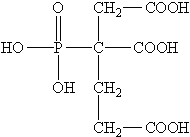Understanding the Applications and Benefits of Polyaluminium Chloride Solution in Water Treatment Processes
Understanding Polyaluminium Chloride Solution A Versatile Coagulant
Polyaluminium chloride (PAC) solution is a chemical compound widely used in water treatment processes. Its unique properties make it an effective coagulant, enhancing the efficiency of water purification and wastewater management systems. As industries and municipalities continue to grapple with the challenges of water quality and availability, PAC has emerged as a go-to solution for achieving clean and safe water.
What is Polyaluminium Chloride?
Polyaluminium chloride is a soluble polymer that contains aluminium and chloride ions. It is manufactured by the partial hydrolysis of aluminium chloride and is often available in various forms, including solid and liquid solutions. PAC is noted for its high charge density and larger molecular size, which contribute to its effectiveness in coagulation processes.
Mechanism of Action
The primary role of PAC in water treatment is to facilitate coagulation. Coagulation is the process where particles suspended in water, such as silt, bacteria, and organic matter, are agglomerated into larger clusters or flocs that can be more easily removed. PAC works through several mechanisms
1. Charge Neutralization Most suspended particles carry a negative charge, which prevents them from sticking together. PAC, being positively charged, neutralizes these charges, allowing particles to bond.
2. Particle Bridging The larger polymer chains in PAC can act as bridges between smaller particles, creating larger flocs that can settle out of the water more readily.
3. Hydroxide Formation Upon dissolution, PAC releases hydroxide ions, which facilitate the formation of further flocs through chemical reactions in the water.
This multi-faceted action enables PAC to effectively reduce turbidity, remove color, and reduce biological contaminants in water supplies.
Applications of PAC Solution
polyaluminium chloride solution

2. Wastewater Treatment In industrial settings, PAC is used for the treatment of wastewater, especially in processes that involve high levels of suspended solids and organic materials. This helps in meeting regulatory discharge requirements.
3. Paper and Pulp Industry PAC is utilized in the production of paper to enhance the retention of fibers and fillers, improving efficiency and reducing waste.
4. Cosmetics and Personal Care Some personal care products incorporate PAC for its skin-friendly properties and ability to stabilize emulsions.
Advantages of PAC Over Traditional Coagulants
Polyaluminium chloride has several advantages compared to traditional coagulants like alum (aluminium sulfate)
- Lower Dosage Requirements PAC is typically more effective at lower dosages, which can lead to cost savings in chemical purchases and handling.
- Wide pH Range Effectiveness PAC can function efficiently across a broader pH range, making it adaptable to different water characteristics.
- Reduced Sludge Production The use of PAC often results in less sludge generation compared to traditional alum, simplifying waste management processes.
Conclusion
Polyaluminium chloride solution is a key player in modern water treatment processes, offering an effective and efficient means to ensure clean water for various applications. With its unique chemical properties and versatile usage, PAC continues to gain favor among water treatment professionals globally. As we move toward stricter environmental regulations and increased focus on water conservation, the role of PAC and similar coagulants will be crucial in addressing the growing challenges of water quality and accessibility.
-
Water Treatment with Flocculant Water TreatmentNewsJun.12,2025
-
Polymaleic AnhydrideNewsJun.12,2025
-
Polyaspartic AcidNewsJun.12,2025
-
Enhance Industrial Processes with IsothiazolinonesNewsJun.12,2025
-
Enhance Industrial Processes with PBTCA SolutionsNewsJun.12,2025
-
Dodecyldimethylbenzylammonium Chloride SolutionsNewsJun.12,2025





